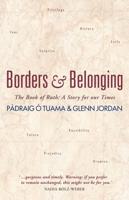Publisher's Synopsis
In recent years, the Supreme Court's use of the Federalist Papers has received much scholarly attention, but no analysis has focused on the Anti-Federalist Papers. This Article undertakes the first systematic analysis of the Court's use of the Anti-Federalist Papers and concludes that the Supreme Court has misused the Anti-Federalist Papers as a source of original meaning by treating all Anti-Federalist Papers alike when they are actually of differing historical value. Increasingly, the Court treats little-read Anti-Federalist Papers written by unknown authors identically to the widely reprinted writings of those Anti-Federalists present at the Constitutional Convention and prominent in the ratifying debates.
The Court's confusion of availability with authority is not unique to the Anti-Federalist Papers. Rather, this confusion represents an under-examined pitfall in the process of canon formation: the dangers of increased availability. In 1981, Herbert Storing published a "complete" volume of Anti-Federalist Papers, including many little-known Papers with relatively low historical impact. Almost immediately, members of the Court cited many of these marginal papers alongside the words of prominent founders, confusing contemporary availability for jurisprudential authority. Storing's 1981 publication effectively served as a controlled experiment: documents which were uncirculated for two centuries were suddenly made widely available in a single volume. Studying the impact of the publication of these documents and the uses to which these documents were put provides insight into the larger challenges posed by increased availability in the modern era.
The Dangers of misunderstanding the Anti-Federalist Papers as a case study for examining unrecognized dangers that arise from increased availability, the volume includes the complete texts of The Anti-Federalist Papers and Constitutional Convention debates, commentaries, and an Index of Ideas. A series of essays arguing against a stronger and more energetic union as embodied in the new Constitution. It also lists cross-references to its companion volume, this work is considered, by many, to be the authoritative compendium on the publications. Along with The Federalist Papers, this invaluable book documents the political context in which the Constitution was born.










